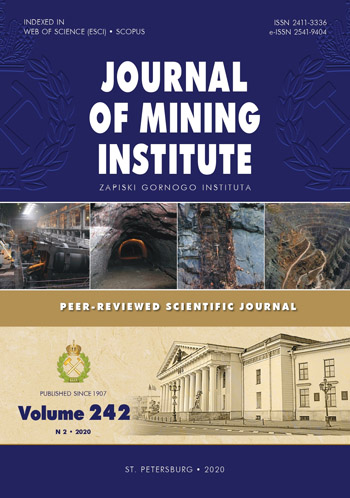Research of lithium sorption by KU-2-8 cation exchanger from model solutions simulating geothermal fluids in the dynamic mode
- 1 — канд. техн. наук Leading Researcher Research Geotechnological Center, Far Eastern Branch of Russian Academy of Sciences ▪ Orcid ▪ Elibrary ▪ Scopus ▪ ResearcherID
- 2 — Leading Engineer Research Geotechnological Center, Far Eastern Branch of Russian Academy of Sciences ▪ Orcid ▪ Elibrary
Abstract
The extraction of chemical compounds from hydromineral raw materials is currently a promising objective. The geothermal deposits in the Kamchatka Territory should be considered as possible sources of lithium, boron and other chemical compounds. Their economic efficiency is justified by the complexity of the use of resources of geothermal fluids. The article presents data obtained as a result of experimental studies of lithium sorption by KU-2-8 cation exchanger from model solutions that simulate geothermal fluids in the dynamic mode. It was shown that in the first phase of sorption, ion exchange results in the absorption of lithium and sodium ions by the hydrogen form of cation exchanger up to the degree of cation exchanger saturation by 78 %. After that, the displacement of lithium ions by sodium ions is observed. The intermediate solutions were obtained in which the molar ratio of Li/Na is 80 times higher than in the initial solution. To separate sodium and lithium, it is proposed to use the lithium form of cation exchanger obtained using a portion of lithium chloride concentrate. The separation occurs due to the displacement of lithium ions by sodium ions. The effluent has a molar ratio of Li/Na = 10.4. The regeneration is carried out with 1 n hydrochloric acid, while the concentration coefficient of sodium chloride equals three.
